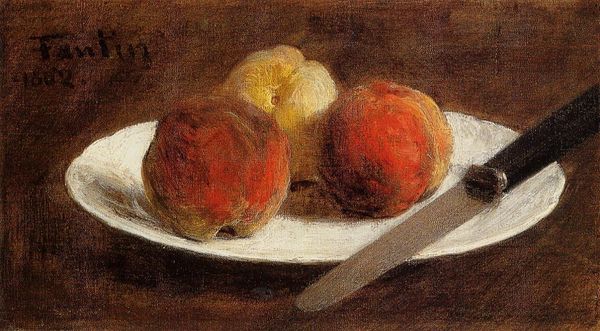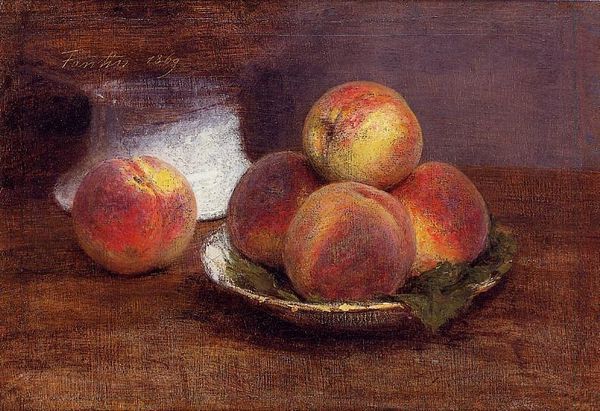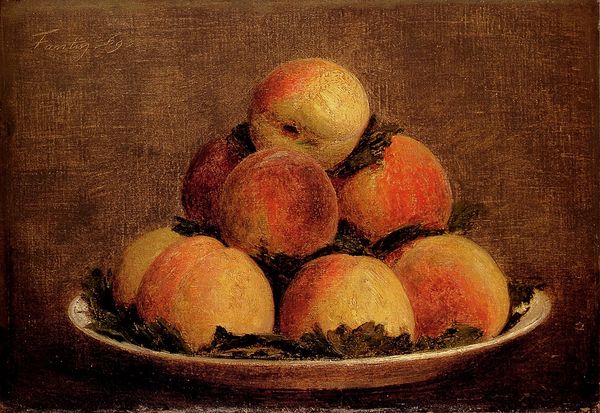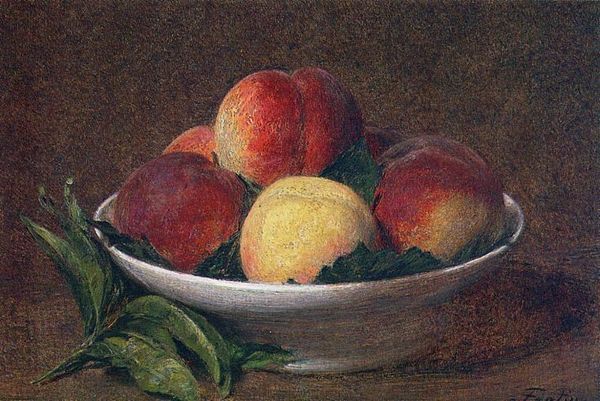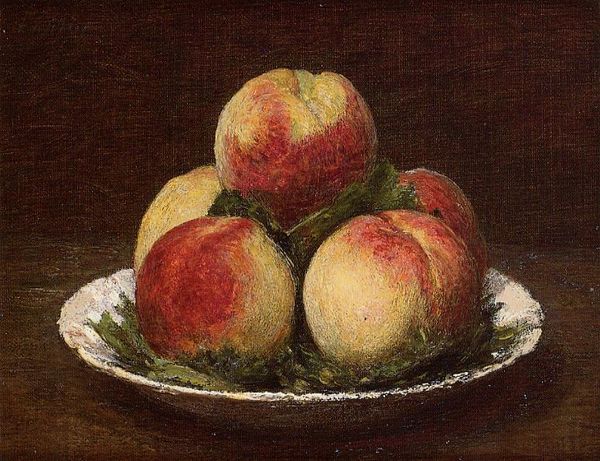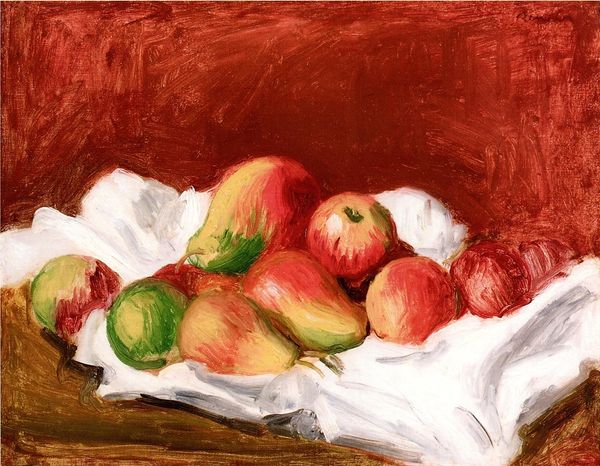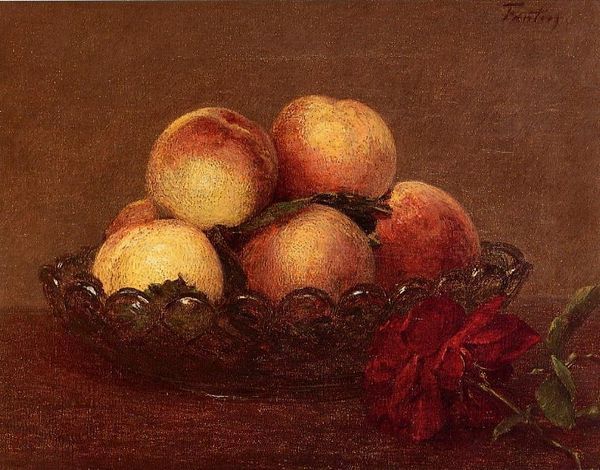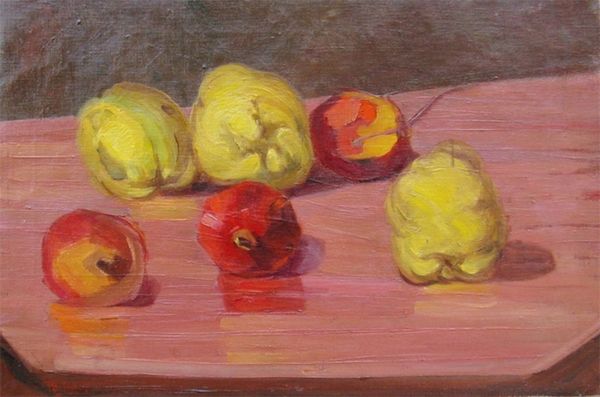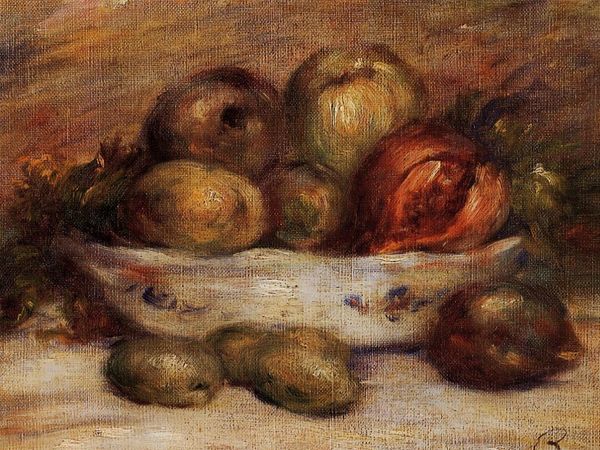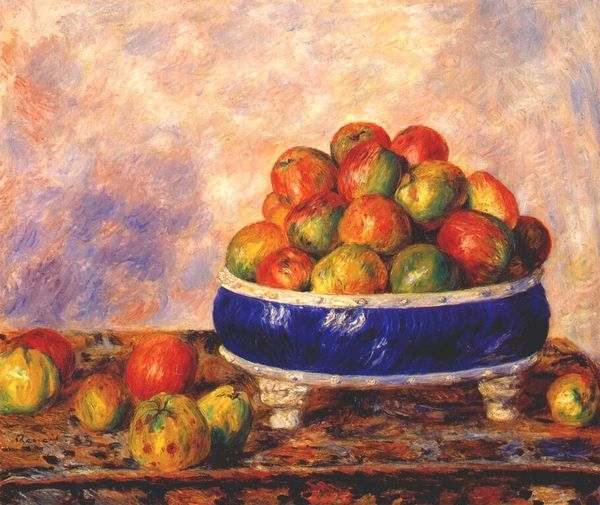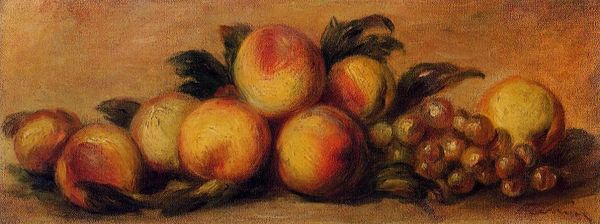
Copyright: Public domain
Editor: Here we have Renoir's "Still Life with Apples and Pears," painted in 1903 using oil on canvas. I'm struck by how the fruits seem to blend into their surroundings; the forms feel softened by the brushstrokes, almost as if they are melting. What do you see here? Curator: This piece offers a compelling look at how Renoir negotiated the boundary between high art and what might be deemed a 'domestic' subject. Let's consider the materials: oil paint, canvas. How were these acquired, prepared, and ultimately, consumed by the Parisian art market? Editor: I never thought about it in terms of consumption, but of course, Renoir needed to purchase the materials somehow. Curator: Exactly. Also consider his Impressionist style: its 'plein air' roots emphasized a direct engagement with the visible world, which some saw as a break from the formal, academic still lifes that emphasized detail and controlled composition. This piece reflects a changing social and economic landscape. How might this relate to emerging mass production and the consumer culture developing at that time? Editor: So you're saying his loose brushwork and everyday subject matter also challenged traditional ideas about artistic skill and what was worthy of representation? Curator: Precisely. This style offered something very different, and was connected to profound shifts in both the modes of artistic production and the very structures of Parisian society itself. This image also hints at new distribution networks and taste in decoration of households, thus challenging our understanding of Impressionism beyond formal achievements. Editor: That perspective gives me so much to consider beyond the simple beauty of the fruits. Curator: Indeed! It's about unpicking those delicate layers of production, and seeing Renoir embedded within complex webs of social exchange.
Comments
No comments
Be the first to comment and join the conversation on the ultimate creative platform.
